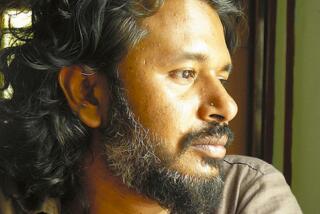Sinhalese Backlash Threatens Peace, Sri Lanka’s Future
- Share via
A backlash by Sinhalese Buddhist hardliners is likely to challenge any peace agreement with Tamil guerrillas in Sri Lanka. This was demonstrated by the rioting that spread throughout the Sinhalese heartland, as well as this week’s attempt on the life of President Junius R. Jayewardene and the potential for a coup.
But India, the guarantor of the peace, isn’t the only outside power that should be concerned. Sinhalese extremism--its irrational roots and its fundamentalist overtones--must also worry the United States now that Washington has pledged logistical military assistance to the westward-facing government of Jayewardene, after wisely staying on the sidelines for years.
Though the fighting may have stopped and the guerrillas surrendered their weapons, the same cultural trends in Sinhalese society that originally fueled the ethnic situation are still a factor and will be for some time. Territorial concessions to separatists, in the form of provincial autonomy for Tamils, touch deep-seated fears in the Sinhalese psyche. Although on the island itself they number 13 million as against 2 million Tamils, the Sinhalese see themselves as a regional minority against the 50 million Tamils in southern India. According to Sinhalese history, it was Tamil invaders who defeated Sinhalese kingdoms of the much-mythologized “Golden Age” a millennium ago and wrecked the impressive achievements of the vast hydraulic civilization that they had built.
Today those fears of engulfment cause the Sinhalese to view Tamil autonomy in the north and east as the first step toward consolidation with their brethren on the subcontinent, followed by eventual Indian subjugation. But worse than a political takeover would be what they are afraid would follow: the obliteration of their religion and their culture--they see themselves as “the lion race,” entrusted with the sacred historical mission of preserving Sinhala Buddhism in its last refuge on Earth.
Demagogic elements within the clergy have been able to fan those fears into hysteria, particularly among the uneducated masses that have traditionally regarded the monks as the guardians of the national flame and the source of moral direction. Exaggerating the threat posed by minority Tamil efforts to win political and economic equality and recognition for their language, the monks have become the unbending ideologues of a shrill Sinhalese-Buddhist nationalism. In 1983, when ghastly anti-Tamil riots broke out in Colombo and triggered the civil war, monks encouraged Sinhalese mobs and were reportedly party to hatchetings and burnings themselves. Now, rabble-rousing clerics who see the settlement apocalyptically have takenthe masses to the streets again and have threatened to emulate the 1960s self-immolation of South Vietnamese monks, some of whom had been trained in Sri Lanka, as a means of inflaming violent protest.
But clerical appeals for “protecting the motherland” are part of another agenda, too. By beating the nationalist drum, the clergy stands to regain its sagging secular influence and social prestige, somewhat like the Iranian mullahs. Opposition politicians who also want to ride the ethnic issue into power have met clerical ambitions with pledges for a more expansive role in the next government.
Sinhalese extremism is also fueled by cultural and religious revivalism. Centuries of colonial deracination have made the Sinhalese insecure about their cultural identity, just as too-rapid Westernization feeds Islamic anxiety. As a reaction, the Sinhalese chauvinistically assert the superiority of their own culture and claim proprietary rights over the affairs of the country, spurning the ideals of secular pluralism and tolerance bequeathed by the British and other Western influences.
Newspapers proclaim the beauty of the language, the loftiness of the spiritual heritage and the glory of the Sinhalese past. Traditional mufti--for men, a skirt called the sarong--is now obligatory for politicians who once might have worn Western clothes to English-style schools. Families that converted to Christianity are now switching back to Buddhism because of the economic and social advantages offered.
Daily life is filled with petty tributes to “the Sinhalese way,” ranging from bathing habits to diet. Subtly yet significantly, such gestures communicate a psychology of exclusion in which to be Sri Lankan is to be Sinhalese is to be Buddhist. Racist thinking ignores shared cultural and genetic roots and lays stress on “Aryan” blood purity against contamination by “Dravidian” Tamils. “You know the way the Nazis treated the Jews,” one Sinhalese bus driver explained to me. “Well that’s the way we treat the Tamils. They can’t stay here.”
In Third World ethnic conflicts the fighting is often only the tip of the iceberg. In its volatile nationalistic incarnation, Buddhism is more fetish than philosophy, more ideology than religion. No peace agreement can arrest powerful forces churning within Sri Lankan society. If hard-liners in the clergy and opposition parties are able to fan the chauvinism of the Sinhalese, they could bring the present government down in the next election or force it to renege on some of its commitments. If this happens after Indian forces are withdrawn soon, Tamil militants might again take up arms. In such a case India would be drawn back into the conflict, and Sri Lanka would become a Northern Ireland where the referee itself becomes the target.
More to Read
Sign up for Essential California
The most important California stories and recommendations in your inbox every morning.
You may occasionally receive promotional content from the Los Angeles Times.













